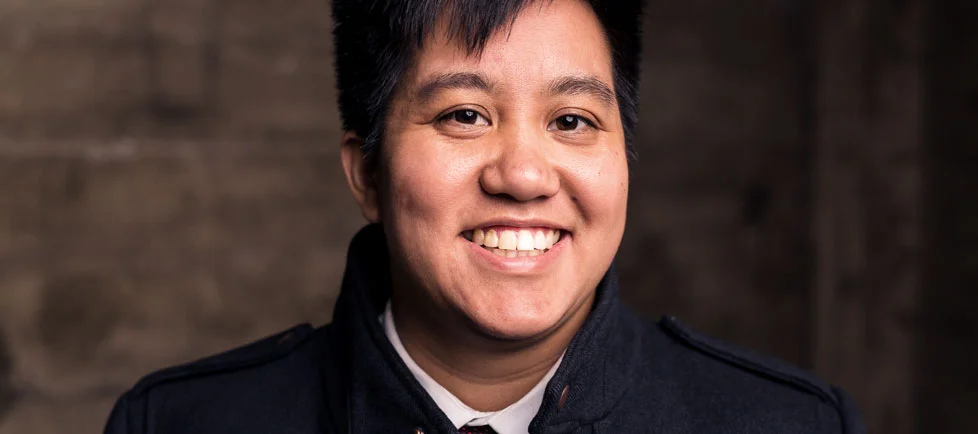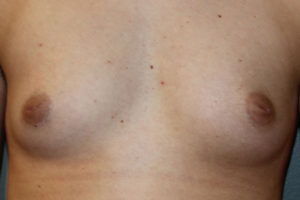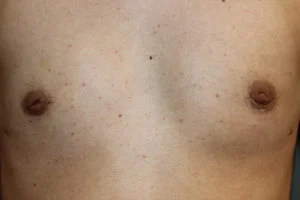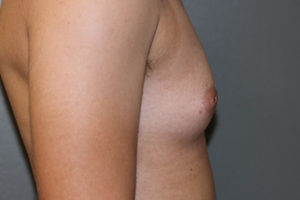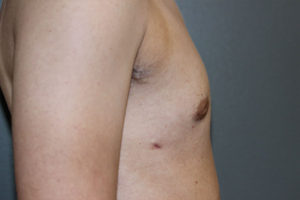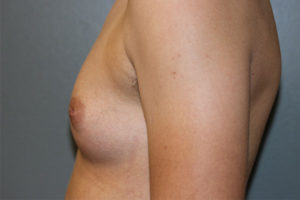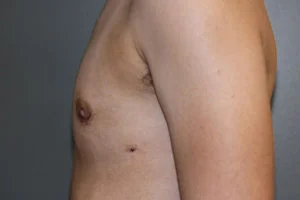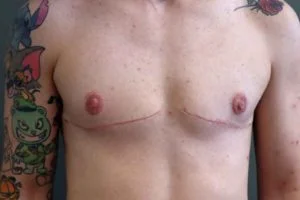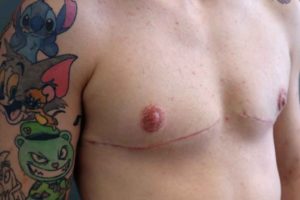What Is FTM and FTN Top Surgery Recovery Like?
To help minimize any post-operative bruising, swelling and discomfort, a supportive and snug dressing is placed around the chest following surgery and kept on for a few days. This is then replaced with a form-fitting garment that is worn for several weeks thereafter.
Drains, which are tubes coming out through the skin on the sides of the chest and which serve to remove unwanted fluid in the surgical field, usually stay in on average for ten days to two weeks. Those individuals who have had their top surgery using the double incision free nipple graft technique will have a special dressing on around their “new” nipples for two weeks in order to protect them and allow them to be revascularized (get a new blood supply). See photo here.
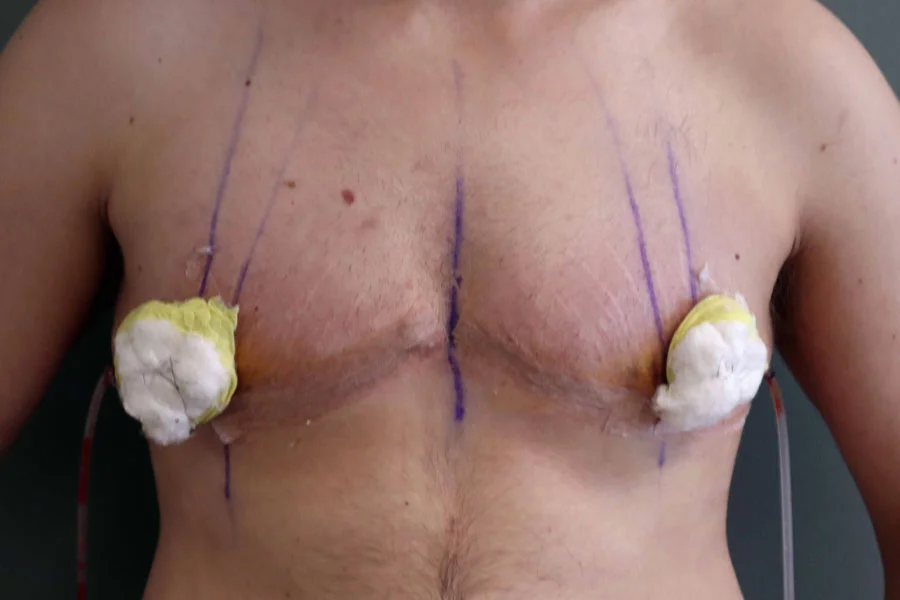
Recovery Dressings & Drains for Double Incision Free Nipple Graft
This is the typical appearance of someone six days post a double incision free nipple graft mastectomy. Butterfly tapes (steri-strips) are covering the incisions. The dressings seen in the photo on both breasts, called “bolus dressings,” serve to immobilize and protect the free nipple grafts. They are usually kept in place for around two weeks.
On either side of the chest are the drains coming through the end of the incision. These serve to drain fluid following the mastectomy and are usually kept in for around ten days to two weeks.
The majority of patients experience only a mild degree of discomfort that can typically be alleviated with oral medication. Most individuals feel well enough to return to school and/or non-strenuous office jobs within one to two weeks after surgery. However, it is strongly recommended to avoid any vigorous upper extremity and chest types of physical activities, including heavy lifting, for two to three months depending on a variety of factors.
For more explicit information on activity guidelines, including restrictions, following FTM or FTN top surgery, read Recommended Activity Restrictions Following FTM and FTN Top Surgery
[yottie id=”15″]
The results of top surgery are evident immediately though it can take up to a year for all the swelling to fully resolve and the incision lines to mature and largely fade. You actually may see some increased swelling for the first two months which then gradually subsides.
The final outcome of FTM or FTN breast surgery can be truly life-changing for individuals transitioning from female to male or female to non-binary or other more neutral chest aesthetics.
Real Patient Experience: Early Recuperation from Keyhole FTM Top Surgery
Generalizations can be made about the expected early recuperation from the keyhole approach for top surgery, but this does not guarantee that it will perfectly match your experiences. The reason for this is that each person’s unique constellation of factors and variables strongly affects the outcome and perceptions. Nevertheless, the following patient of Dr. Turkeltaub can illustrate what you may be able to expect.
This patient, in their 20s, underwent a FTM mastectomy using the keyhole approach under general anesthesia (before photos). A drain tube was placed on each side along with a postoperative compressive dressing. Two days later, the dressing was removed and replaced by a compression garment. After eight days, both of the drain tubes were removed in the office. Discomfort level at this time was fairly minimal.
Due to social media policies, the following images have been censored. Please click on the button below to view the image.
*Individual Results May Vary
At only three and a half weeks, the early results can be seen and are significant (post-op photos). No pain medication is being taken. Swelling is present though not overwhelming and no bruising is present. The incisions with areas of redness seen on the side views are where the drains exited the skin.
Swelling can take up to two months to maximize then start to resolve. It can take up to a year for maximal resolution of the swelling in order to see the long-term results. The drain exit sites should ultimately heal as fine lines.
The results should be a masculine appearing chest with virtually invisible, very short scars.
I initially chose to see Dr. Turkeltaub because he was one of the very few local surgeons who could perform a bilateral mastectomy. But BOY did I make the right decision. I’m currently 5 weeks post op. Dr. Turkeltaub and those in his office have made this experience so smooth. From the moment I scheduled my consultation they have been highly attentive, kind, reassuring and have been willing to answer the gazillion questions I’ve had along the way.
From a technical standpoint, my procedure and recovery have been so clean and accurate to the timeline they originally estimated. My scars are razor thin and looking more even and natural every day. The followup care I’ve experienced has been reassuring and they’ve allowed me to schedule unexpected followup appointments just because I wanted to make sure everything was okay. They’ve been incredibly patient and professional and I couldn’t recommend a better or more qualified surgeon.
5/5 stars
Taylor Blackmore
January 10, 2020
Real Patient Experience: Early Recuperation from Double Incision Free Nipple Graft FTM Top Surgery
This is a relatively typical example of the results that can be seen at two months post-FTM top surgery using the double incision free nipple graft technique. His nipple-areola complexes were covered by an “immobilization” dressing for two weeks and protected overall for four weeks to allow them to be revascularized (get a good blood supply back) and properly heal.
Due to social media policies, the following images have been censored. Please click on the button below to view the image.
*Individual Results May Vary
Scar gel was started at three weeks for the incision at the lower part of his chest and then added around the areolas a week later. Full scar maturation will take a year or even longer for maximal improvement.
At four weeks, he was able to resume virtually all activities except for a few chest-related workouts that he had to wait another more month in order to fully resume without any restrictions.

 At the Arizona Center for Aesthetic Plastic Surgery, board-certified plastic surgeon
At the Arizona Center for Aesthetic Plastic Surgery, board-certified plastic surgeon 